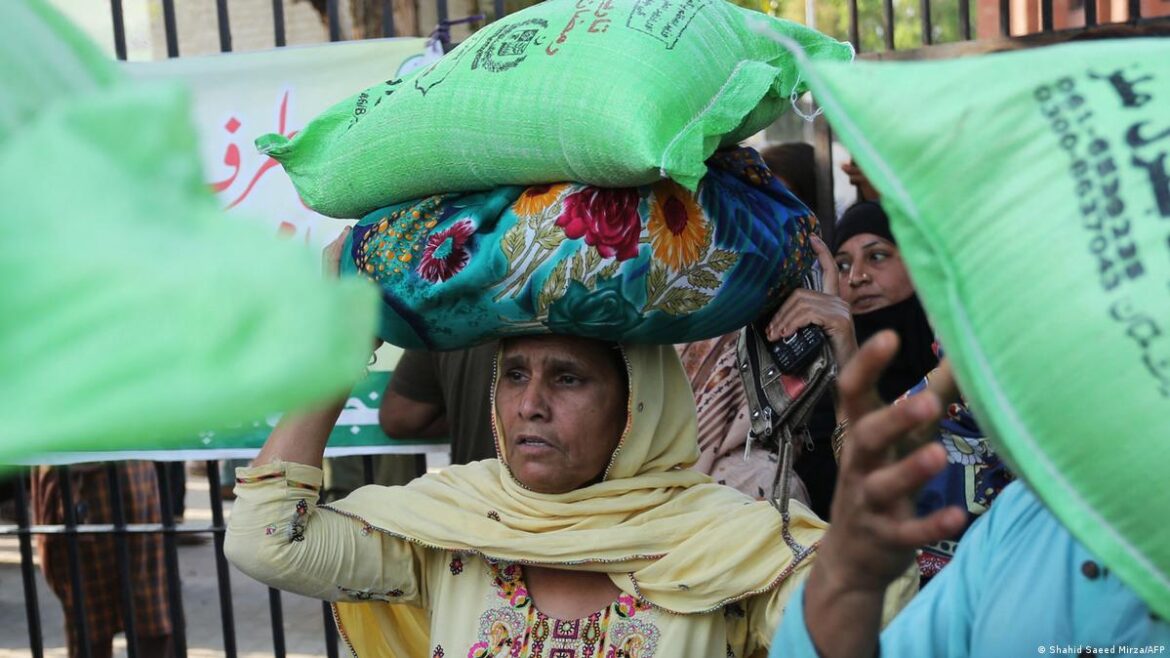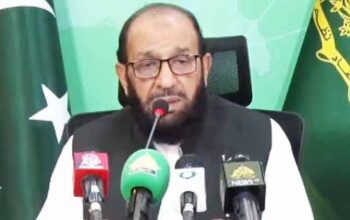The common Pakistani spent the year grunting under the burden of unprecedented economic hardship because of stellar inflation, with profiteers sharing not a little of the blame, along with officials asleep at the wheel. Will 2024 be any different?
By Muhammad Ali
ISLAMABAD: As the Pakistan Bureau of Statistics (PBS) prepares to publish inflation data for December 2023 on Monday, Pakistan is all set to close the year with yet another month of roaring inflation after four weeks of nominal ebb and flow in the Sensitive Price Indicator (SPI) according to official data.
The Sensitive Price Indicator (SPI) is computed weekly to assess the price movement of essential commodities to track the prices of 51 essential items from 50 markets in 17 cities of the country. As such, the SPI is quite limited in its scope in comparison with the Consumer Price Index (CPI), which tracks a
basket of 487 items from 76 markets in 40 cities. Still, the SPI and CPI trends generally align.
While it has receded from the high mark of 38 percent recorded in May 2023, headline inflation was still roaring at 29.2 percent in November and is expected to be there or thereabouts in December.
After November returned an SPI inflation increase of 30.6 percent YoY, the first week of December (ended December 7) saw a 1.16 percent increase in SPI inflation. PBS data for the next two weeks reported SPI inflation decreasing by 0.06 percent (for week ended December 14) and 0.51 percent (for week ended December 21).
However, the month was capped by another upturn in SPI inflation, with official data indicating a 0.37 percent increase in SPI inflation for the week ended December 28. While the upturn in inflation in the first week of december was understandable in view of the gas price hike notified in November, the latest surge likely stems more from unchecked profiteering by unscrupulous elements.
Earlier this month, when the Monetary Policy Committee (MPC) of the State Bank of Pakistan (SBP) decided to maintain the policy rate steady at 22 percent to curtail inflation, it acknowledged the impact of the gas price hike on inflation but said it would be offset by other factors, such as the decrease in international oil prices and improved availability of agricultural produce.
The authorities have been alert to the price-gouging tendencies of the mercantile class for some time now. On October 3, 2023, the Economic Coordination Committee (ECC) of the Cabinet ordered the National Price Monitoring Committee (NPMC) to conduct regular meetings to mobilise provincial Islamabad Capital Territory administrations to control prices.
Strangely, however, the NPMC took over two months to meet in pursuance of this directive, convening on December 12, 2023 under the chairmanship of Minister for Planning Development & Special Initiatives.
The top recommendation of the NPMC was for the governments of Sindh and Balochistan to immediately activate Decision Support System on Inflation (DSSI) and to direct the respective provincial and district Authorities to report on price monitoring and checking profiteering and hoarding.
It is now known why the NPMC chose to leave the more populous Punjab and Sindh provinces without these measures.
The NPMC also recommended for the Utility Stores Corporation (USC) to improve its procurement mechanisms to take advantage of bulk purchases to secure lower than market prices – as if the USC, set up in 1971 and running almost 6,000 stores across Pakistan, needed the geniuses of the committee to alert them to optimal procurement practices.
The third and final recommendation of the NPMC was for the provincial and ICT administrations to “vigorously pursue smooth availability of essential items and to continue to identify and monitor the difference in the retail and wholesale prices at district level and make efforts to control those”.
The lacklustre performance of the NPMC in controlling unethical practices like profiteering and hoarding by unscrupulous elements among the country’s mercantile class is a direct reflection of how low a priority the caretaker government headed by Prime Minister Anwar-ul-Haq Kakar assigns to the plight of the common Pakistani.
Take for example how the sustained decrease in petrol and diesel prices – considered the single largest driver of price inflation in Pakistan – has failed to translate in a commensurate decrease in inflation over the past several months.
The central bank is targeting an inflation rate of 5-7 percent by the end of fiscal year 2025 – contingent of course upon continued fiscal consolidation and timely realisation of planned external inflows. From the common man’s perspective, however, it is far from clear how inflation can return to manageable proportions in the absence of strict enforcement to weed out profiteering, hoarding, and such other unethical practices.
PBS data shows that the inflationary pressure continues to persist, although it has somewhat eased from the peak of 38 percent in May 2023. Officials say inflation is expected to maintain a downward trajectory as, given the energy prices decreases and the rupee stabilisation, inflationary expectations of households and businesses have lowered.
In November 2023, the National CPI Inflation increased 29.2 percent year-on-year, as compared to an increase of 26.8 percent in the previous month and 23.8 percent in November 22. Month-on-month, this reflected an increase of 2.7 percent, compared with an increase of 1.0 percent in the previous month.
Core inflation with 42 percent share at the national level was the leading driver of headline inflation at that point, with food inflation combining in a close second at 41 percent, down from 53 percent in November 2022.
The PBS is due to release its monthly review on price indices for December 2023 on Monday.
Copyright © 2021 Independent Pakistan | All rights reserved




